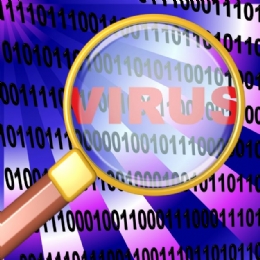Free Solutions for Keeping Your Computer Bug-Free


Enlarge Image
One day you notice your Windows-based computer is running more slowly than normal. You decide to restart it and see if that fixes the issue. Windows loads, and a security alert pops up to notify you that you have a virus. You click the alert, and an antivirus program starts scanning your computer. That’s odd…you don’t remember installing that virus scanner.
You open Internet Explorer to find information about this, and instead of your normal start page you are taken to a web site you’ve never seen before that tells you a virus has been detected on your computer, but luckily you’ve arrived at a web site where you can purchase a virus scanner. They even take credit cards. How fortuitous!
You purchase the software and download it. The virus scanner appears to scan but really doesn’t seem to do anything. Your browser is still locked to that site. Your computer still has a virus. And now the virus creators have your credit card number. Congratulations, you have been successfully scammed!
Put away your credit card. You may have a virus, but there are some completely free alternatives that can help remove all traces of a virus from your computer.
The first step is determining that you have a virus. If you do not have a Windows computer, you are likely not at risk of having a virus. For years, Macintosh computers have been virtually immune because virus writers did not target those systems. This is beginning to change, but for the most part only Windows machines are susceptible to infection.
A computer with a virus on it will generally run much slower than it normally does. This will happen suddenly. There are many different ways a virus can appear on your machine and many ways it can manifest itself, but if your PC is running slower than is normal, you should get it checked out.
We will be discussing two excellent free resources to remove a virus from your computer. The first resource is Anti-Malware by MalwareBytes Corporation. There is both a pay and a free version. The free version will remove viruses on your computer, and the pay version will help to automate that process. The second resource is Trend Micro’s Housecall. This, too, has a pay version that you can purchase if you desire. Each program has to be downloaded to your computer and installed.
Sometimes, however, the virus changes your internet settings and prevents you from finding resources online. One way around this is by using the Safe Mode tool that comes with all modern versions of Windows. To access safe mode, restart your computer. Begin to tap the F8 key before you see the Windows loading screen. If you’ve pressed the F8 key at the proper time, you will be presented with the Safe Mode menu. Select ‘Safe Mode with Networking.’ When Windows loads, you will see the words ‘Safe Mode’ at each corner of your screen.
Safe Mode only loads the bare essential functions that Windows requires in order to operate. Because of this, a virus that is affecting your system usually will not be loaded. Since you chose Safe Mode with Networking, you have access to the Internet and can access the tools you need to remove the virus from your computer.
After installing your preferred virus removal tool, the program will download a list of all the latest virus definitions. When that finishes, you should perform a full system scan. The virus tool needs to search your entire system, and while it may take hours it is well worth it, if the scanner can clear your system of malicious programs. When removing a virus it is often wise to scan your system several times to ensure that you have completely eradicated any threat.
Sometimes, however, in spite of your best efforts you simply can’t remove a virus on your own. When that happens, don’t be afraid to take your system to a professional. They have the knowledge to remove any threats and can get your system back in working condition.
When the virus is removed, it is also a good idea to change any passwords you might have used. Sometimes a virus can send your passwords to its creator. Imagine if a virus stole your online banking password! It’s very important to change passwords, so don’t skip this step.
In spite of your best precautions your computer may wind up with a virus. It’s an irritant, but with the right plan of action a virus is nothing to be scared of. There are plenty of free resources available, and in no time at all your computer should be functioning perfectly!

